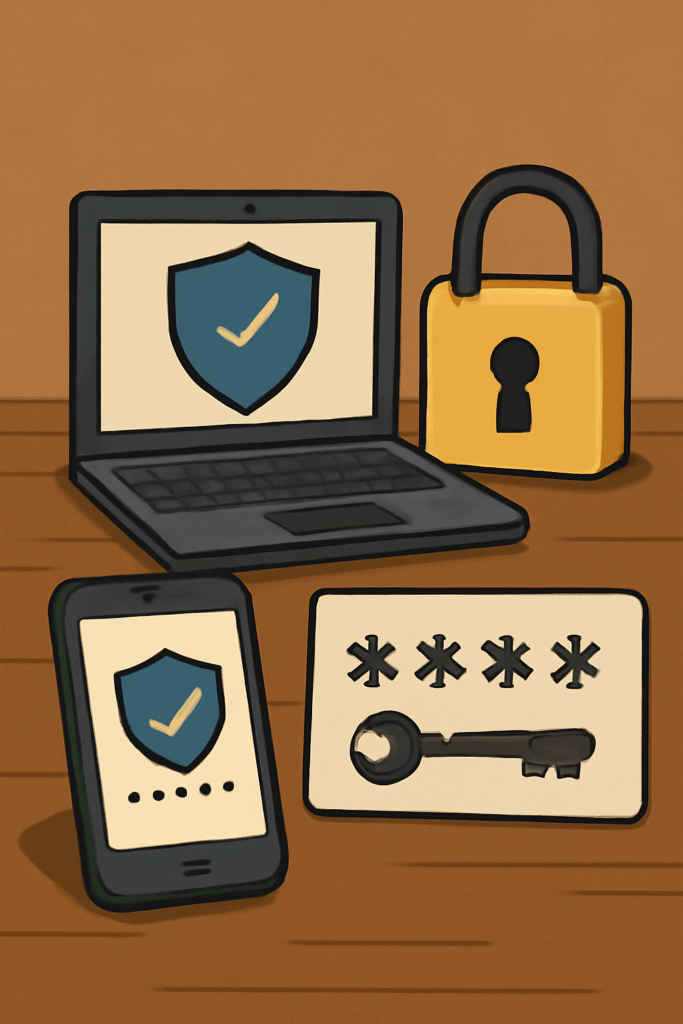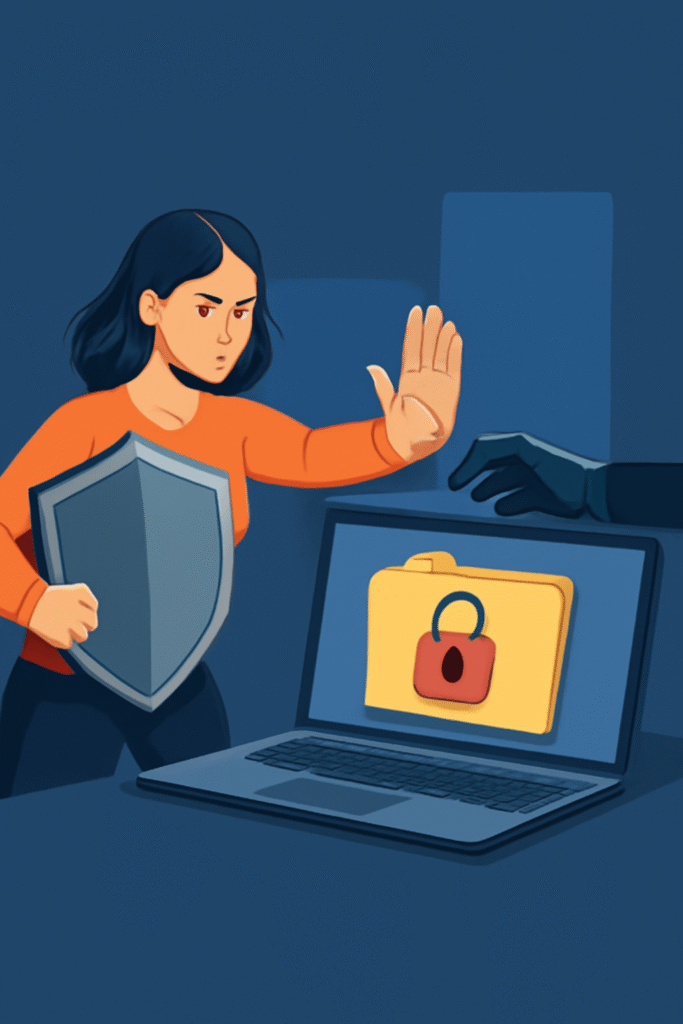No mundo digital, quem não se protege vira dado estatístico.
À medida que a transformação digital se acelera, os golpes online evoluíram para operações altamente sofisticadas. Em 2025, proteger-se exige mais do que um simples antivírus — é necessário um kit comportamental que combine vigilância, tecnologia e educação contínua.
Com phishing impulsionado por IA, golpes com clonagem de voz e sites falsos hiper-realistas, compreender as táticas modernas de fraude deixou de ser opcional — é uma questão de sobrevivência digital.
Por Que os Golpes Digitais Estão Disparando
A migração de bancos, compras e trabalho para plataformas digitais criou uma verdadeira mina de ouro para fraudadores. Entre as principais ameaças estão:
🔴 Phishing aprimorado por IA:
76% dos ataques agora usam aprendizado de máquina para personalizar mensagens (Cybersecurity Ventures, 2024).
🔴 Golpes via WhatsApp:
Os golpes do tipo “Oi, mãe” causaram perdas globais de US$ 3 bilhões no último ano.
🔴 Clonagem de voz:
Amostras de áudio de apenas 11 segundos já conseguem replicar vozes com 98% de precisão.
🔴 Golpes com vídeos deepfake:
Vídeos falsos de “CEOs” já enganaram funcionários, levando empresas a transferirem milhões por engano.

Estudos de Caso de Golpes no Mundo Real
Uma família de Toronto perdeu US$ 25.000 após receber uma ligação da “filha”, chorando e dizendo que havia sofrido um acidente de carro — tudo gerado por clonagem de voz por IA.
Defesa:
Estabeleça uma palavra-código verbal com familiares para emergências.
O Ataque da Fatura Falsa
Uma empresa de construção pagou uma “fatura de fornecedor” de US$ 83.000, enviada a partir de uma cadeia de e-mails sequestrada.
Defesa:
Implemente procedimentos de confirmação por ligação antes de qualquer pagamento.
A Armadilha do QR Code
Clientes de restaurantes que escanearam QR codes de cardápio foram redirecionados para sites maliciosos que esvaziaram contas bancárias.
Defesa:
Use leitores de QR code que exibem o link antes de abrir a página.
Quando a Prevenção Falha: Controle de Danos
Triagem Financeira
• Congele imediatamente cartões e contas pelo app do banco
• Registre ocorrências junto à FTC (ou órgão equivalente) e à polícia local
Descontaminação Digital
• Redefina todas as senhas a partir de um dispositivo limpo
• Verifique dispositivos não autorizados nas configurações das contas
Pós-mortem da Fraude
• Documente horários, mensagens e canais de comunicação
• Denuncie o caso ao Anti-Phishing Working Group (APWG)
O Escudo Corporativo e Governamental
Empresas devem:
• Implementar biometria comportamental para detectar invasões de conta (account takeover)
• Adotar atrasos de confirmação para transações de alto valor
• Oferecer treinamentos com simulações de golpes para funcionários (scam simulation training)
Governos devem:
• Tornar obrigatória a proteção contra troca de SIM (SIM swap) pelas operadoras
• Financiar iniciativas de marcação d’água por IA para identificar mídias sintéticas (deepfakes, vozes clonadas)
• Criar fundos de reembolso para vítimas de golpes, reduzindo o impacto financeiro e social
Preparando suas defesas para o futuro

Proteções emergentes incluem:
• Verificação de identidade baseada em blockchain — registros imutáveis reduzem fraudes de identidade
• Detectores de golpes com IA integrados a e-mails e mensageiros — analisam linguagem, contexto e padrões de ataque
• Links de pagamento autodestrutivos no e-commerce — expiram após uso ou tempo definido, reduzindo interceptações
O Princípio do “Firewall Humano”
Tecnologia sozinha não protege ninguém. A verdadeira barreira é o comportamento.
Cultivar malícia zero e consciência máxima virou habilidade básica da vida digital.
Boas práticas essenciais:
• Trate todo contato não solicitado como suspeito, até prova em contrário
• Faça simulações de segurança com família e equipe (golpe do “Oi, mãe”, falso banco, falso suporte)
• Mantenha-se atualizado por fontes confiáveis como CISA Alerts e Krebs on Security
Como resume Bruce Schneier:
“Segurança não é um produto. É um processo.”
Ferramentas ajudam. Leis ajudam.
Mas o que realmente protege é um mindset treinado — cético na medida certa, informado e atento.
